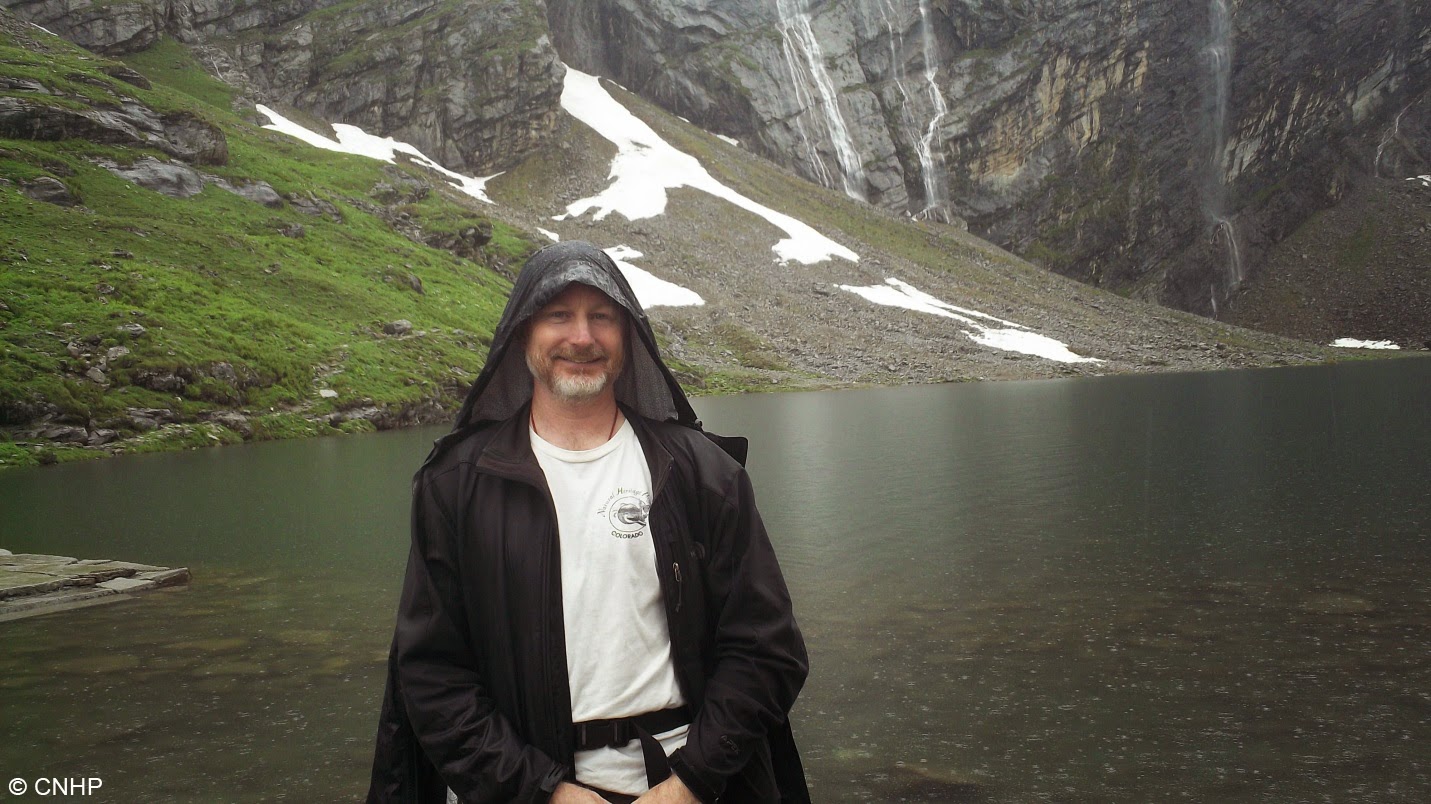My first two weeks in India have been amazing! Everyone has been so incredibly kind to us. Dr. Vinod Mathur, who submitted the proposal to bring me to India as a Fulbright Specialist, and his wife Geetika had us over for dinner shortly after our arrival here and they said that it is customary to treat guests as gods here. That has truly been the case with everyone at the Wildlife Institute of India, and they have made us feel so incredibly welcome.
For the first two days at the WII, I was given a really nice office, had the privilege of meeting several faculty and students here, and was given a great tour of the Institute by Dr. Sathyakumar.
 |
| Dave's new workspace |
 |
| Departing for the field from the Wildlife Institute of India’s Guesthouse with Dr. Ishwari Rai (left) and Umed Singh (middle). |
 |
| At Hemkund Sahib |
We saw at least 15 plants in the area that are on the IUCN Red List. Here is one of the most spectacular- Saussurea obvallata, called Brahma Kamal in India, is a critically endangered member of the sunflower family.
 |
| Saussurea obvallata (Brahma Kamal) |
In Colorado, we also track a member of this genus- Weber’s Sawwort (Saussurea weberi). Here in the Himalayas there is a great variety of Saussurea species and several of them, like S. obvallata, are highly threatened by collection. They are used for Ayurvedic medicines and, in the case of S. obvallata, are collected as offerings for religious purposes.
 |
| Meconopsis aculeata |
You’ll recognize both of these species on the entryway to the Valley of Flowers!
We will address the threats to these and other conservation targets in this area in our Open Standards workshop on July 21 and 22. Stay tuned for an update on that in Part 3!




